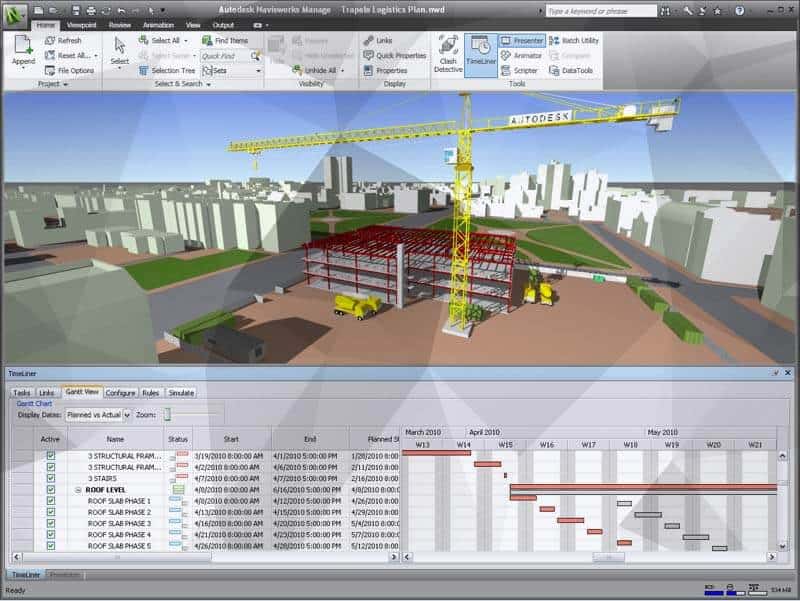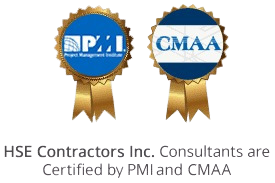HSE is a highly esteemed BIM and drafting firm with a proven track record of delivering high-quality work within budget and on time. Our services are tailored to support BIM consultants, architects, MEP consultants, mechanical contractors, owners, and general contractors nationwide. We offer a wide range of BIM modeling services including:
- Shop Drawings, Fabrication & As Built drawings
- 3D Revit BIM modeling
- Clash detection and coordination, CD/Permit set creation
- Constructability Review, 4D/5D construction simulation
- Scan to BIM and Scan to CAD conversion
- Converting 2D to 3D
- Converting 2D DWGs to BIM model
- Resolving construction clashes
- Tying 3D to CPM
- Clash detection testing.
4D BIM Model of JW Marriott Hotel
What is 3D Modeling, 4D Modelling and Visual Animation?
While 3D models are a familiar concept, not everyone is familiar with 5D BIM modeling technology. This innovative estimating system takes into account two additional dimensions that influence construction: component pricing and time. At HSE, we strive to provide our clients and stakeholders with a comprehensive model of the project at hand, and our BIM modeling services help achieve this goal.
We offer further insight into 3D modeling, 4D modeling, and visual animation.
A 3D model is a virtual representation of physical objects in 3D (x, y, z) as surfaces or solids, including Existing Conditions Model(s), Design Model(s), and Construction Model(s). Construction Model(s) typically include temporary site features and equipment (e.g., detours, temporary signals, utility excavations, falsework, etc.).
A 4D model simulation is an aggregation of virtual models linked to the current CPM Progress Schedule that shows an ordered, time-scaled appearance of model elements/objects. A 4D model must contain one or more virtual models and at least one link to a CPM schedule.
Finally, visual animation is a walk-through of a virtual model that supports movement and display and contains photo-simulations to more accurately depict existing and construction build-out conditions both under and above ground.
BIM 3D PLUMBING EXAMPLE
What exactly is BIM 5D Modeling?
In essence, BIM 5D modeling is a combination of 3D CAD components with scheduling constraints and budgetary concerns, enabling the entire construction team to conceptualize the expense and progress of all construction activities over a particular time period. Our professional BIM modeling services have the potential to revolutionize the management of construction projects regardless of size, location, or complexity, making HSE the ideal choice for your BIM modeling needs.

Benefits of BIM Modeling
BIM Modeling offers significant advantages to contractors, enabling them to accurately estimate expenses at each stage of construction. This allows for better identification of key variables and adjustment of the model to accommodate the client’s unique needs. The 3D BIM modeling technology integrates all aspects of the project, including design, project controls, estimating, scheduling, construction, and accounting. With the help of our seasoned experts, contractors can complete model-based estimating, which is an essential part of any cost plan.
At HSE, we provide comprehensive BIM and 5D modeling services:
- Forensic Analysis
- Scheduling Training (Onsite or Remote Training Available)
- CPM Scheduling
- 4D BIM services
BIM Modeling Services FAQs
Yes, BIM modeling can be used for existing buildings, especially for renovation, retrofitting, or facility management projects. This process is often referred to as “BIM for existing buildings” or “BIM for FM” (Facility Management).
When choosing a BIM modeling service provider, consider factors such as their experience, expertise, software proficiency, and communication skills. It’s also essential to review their portfolio, ask for references, and ensure they meet your project’s specific requirements.
The cost of BIM modeling services varies depending on the project’s complexity, size, and scope. It’s typically priced on a project-by-project basis or as a hourly rate.
For more info about our BIM Modeling Services
Contact Us
Our 5D modeling services allow contractors to conceptualize expenses and progress throughout the construction project, making it easier to manage projects of all sizes, locations, and complexities. Trust our experts to construct an accurate 5D model that yields valuable insights for your project’s success.
Different BIM Models
At HSE, we understand the value of integrating Building Information Modeling (BIM) with cost and revenue loaded construction schedules. Our team of BIM model experts and specialists stays up-to-date with the latest technology, utilizing software such as AutoDesk – Revit, Bentley Suite, and Civil 3D, among others.
We have successfully created multiple 5D models for various projects, providing contractors and owners with useful insights. Our services include different BIM models, such as:
- Design Intent Model: This BIM is created by the architect and is based on the design intent. It is not meant for construction, but rather provided to the Contractor as a reference to create the Construction Model. This model is developed at a LOD of 300.
- Construction Model: This BIM is a copy of the Design Intent Model, initially transferred to the Contractor, who is responsible for maintaining and updating it throughout the course of construction. The Contractor is also responsible for resolving clashes in the model. This model is developed at a LOD of 300.
- Fabrication Model(s): These BIMs are generated by each discipline or trade subcontractor required on the project. A Fabrication Model can be made up of multiple models representing different subsets of each discipline or trade. These models are developed at a LOD of 400 and are used for extracting fabrication and shop drawings.
- Federated Model: This BIM is a composite of the Fabrication and/or Construction Models and the Design Intent Model. The purpose of this model is to review space coordination and constructability.
- As-Built Model: This BIM is developed by the Contractor as a record of the Work as constructed. It is developed at a LOD of 400 and is turned over to the Construction Manager after substantial completion.
- Record Model: This BIM is maintained by the A/E throughout the construction period and is coordinated with the Contractor. The Record Model is used by the A/E to generate changes to the Contract Documents during the course of construction. This model is developed at a LOD of 300.
To ensure coordination among all parties involved, we create detailed and comprehensive BIM Execution Plans (BEP). These plans help in the development of accurate model-based estimating, a vital component of any cost plan.
Levels of Development
- Levels of Development (LOD) is a term used to describe the level of completeness to which a Model Element is developed in Building Information Modeling (BIM).
- At LOD 300, Model Elements are modeled as specific assemblies that are accurate in terms of quantity, size, location, and orientation. This Level of Development is typically used for A/E models such as the Design Intent Model.
- At LOD 350, Model Elements are graphically represented within the Model as a specific system, object, or assembly in terms of quantity, size, shape, location, orientation, and interfaces with other building systems.
- At LOD 400, Model Elements are graphically represented within the Model as a specific system, object, or assembly in terms of size, shape, location, quantity, and orientation with detailing, fabrication, assembly, and installation information. This Level of Development is considered suitable for fabrication and assembly and is used by specialty trade contractors and fabricators to build and fabricate project components, including MEP systems.
HSE develops a comprehensive and detailed BIM Execution Plan (BEP) to facilitate the coordination of all parties involved in the project.
Please contact us for additional information on our construction engineering consulting services.
Related Services

Contact Us
Call Us 1-888-398-8283 Our LocationsEmail us for more info about our BIM Modeling Services
Let Us Contact You
Download our Brochures
Flagship ProjectsMulti-Family Residential Projects
Waste Water & Used Oil Treatment
Residential Projects
Roadways & Bridges Projects
High-rise Projects
Federal Projects
Airport Projects
Commercial Projects
View our Work Samples
4d Modeling SamplesCPM Schedule Report Sample

Call Our Consultants Today!
Our offices in Orlando, New York City, Boston, Los Angeles, San Francisco, Miami, Tampa, Chicago, Denver, Brooklyn, Dallas and Washington, DC, Offer Innovative and efficient solutions on a variety of construction projects nationwide, Contact Us Today!

